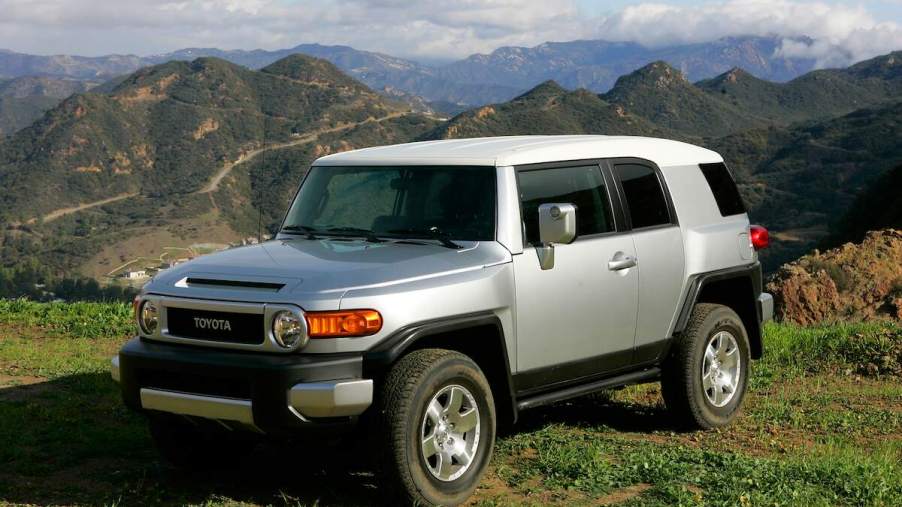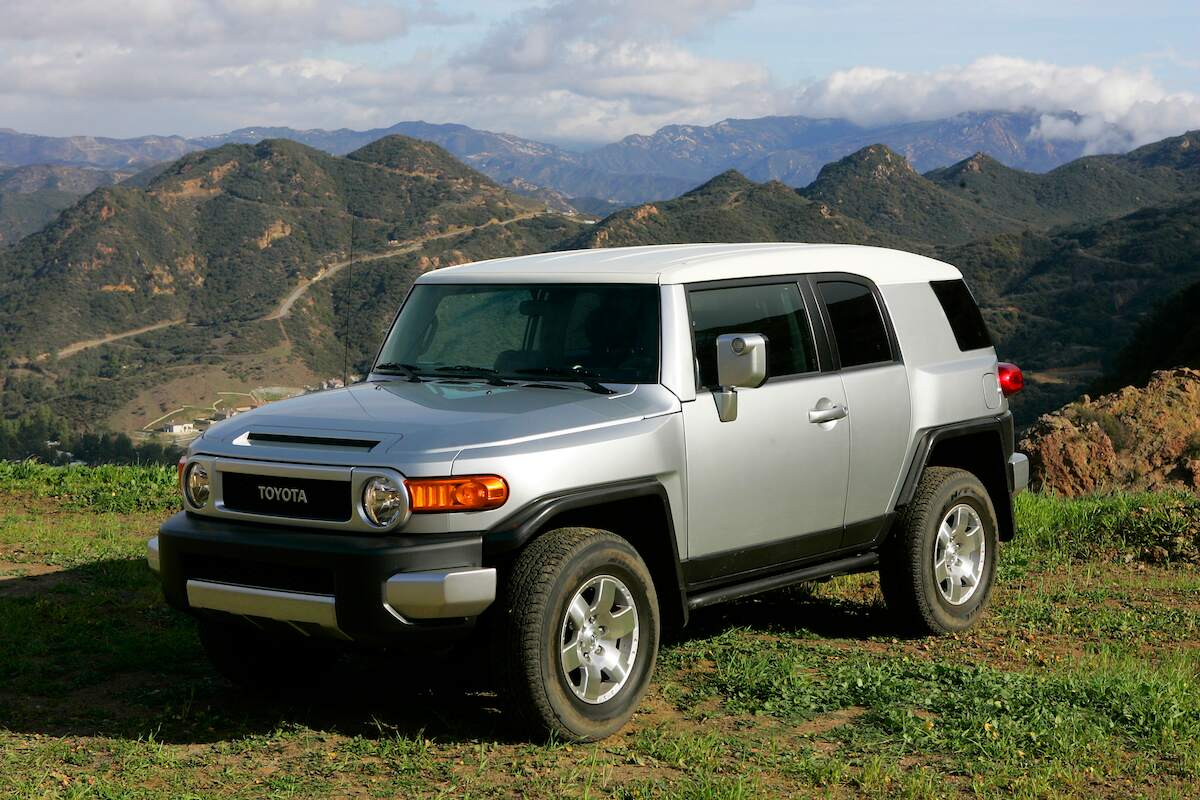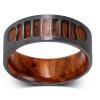
What Does ‘FJ’ Stand for in the Toyota FJ Cruiser?
For a vehicle with a relatively brief run, the Toyota FJ Cruiser has developed an impressive fan base. Increased demand has sent used FJ Cruiser prices higher than some new cars. As this discontinued SUV garners renewed interest, fans want to know more about it. That includes the meaning of “FJ” in “FJ Cruiser.”
The Toyota FJ Cruiser has a fascinating history

In the early 2000s, Toyota planned to produce another off-roading SUV. It also wanted a tribute to the FJ40, which is how the FJ Cruiser came to be.
Toyota revealed the FJ Cruiser concept at the 2003 Detroit auto show. When the production model hit showroom floors in 2007, the automaker had changed little from the prototype.
The rugged midsize SUV had a good run stateside until 2014, when the appeal began to wear off. Though the FJ Cruiser was a blast to drive and looked unique, some issues were hard to ignore. They included a cramped rear row, poor fuel economy, and large blind spots.
So Toyota discontinued the FJ Cruiser in the States after the 2014 model year. The automaker continues to sell the SUV in the Middle East. However, no more will roll off production lines after this year.
What does ‘FJ’ stand for in ‘FJ Cruiser’?
Interestingly, the name “FJ” refers to another automaker.
The FJ Cruiser’s story began with the Toyota Land Cruiser during the Korean War. The United States was backing South Korea and needed a reliable SUV. So America turned to Japan.
Toyota took up the call and designed an off-road-worthy military vehicle. It was heavily inspired by Jeeps, and because the vehicle was equipped with a B-type 3.4-liter inline-six engine, Toyota named it the Jeep BJ, Car and Driver explains.
But Jeep took offense and brought in a legal team. So Toyota changed the name to “Land Cruiser” but later referenced the original moniker.
In the 1960s, as the Land Cruiser became popular, Toyota released its F-type engine. Eventually, the company shortened the SUV’s name to “FJ40.” “F” referred to the engine type, and “J” stood for “Jeep.”
In 1983, Toyota retired the FJ40, but the demand was so high that the auto giant created the FJ Cruiser as a tribute.
The 2014 model marked the SUV’s final year in the U.S.
The 2014 FJ Cruiser packs a 4.0-liter V6 engine producing 260 hp and 271 lb-ft of torque. (Today’s Toyota 4Runner uses the same engine.) It pairs with a five-speed automatic transmission and a rear-wheel drivetrain.
In addition, the 2014 FJ Cruiser has a towing capacity of 4,700 pounds and a payload capacity of 1,251 pounds. It gets only 15 mpg in the city, 20 mpg on the highway, and 18 mpg combined, Edmunds reports.
The nearly decade-old SUV has a few modern conveniences. They include a rearview camera, satellite radio integration, and a USB port. Safety features consist of airbags, traction control, and child seat anchor.
However, the lack of features hasn’t hurt the FJ Cruiser’s popularity on the used market. Toyota is aware of the demand — the automaker even provides a link to certified pre-owned models on its website — but has announced no plans to resurrect this retro-styled SUV.


